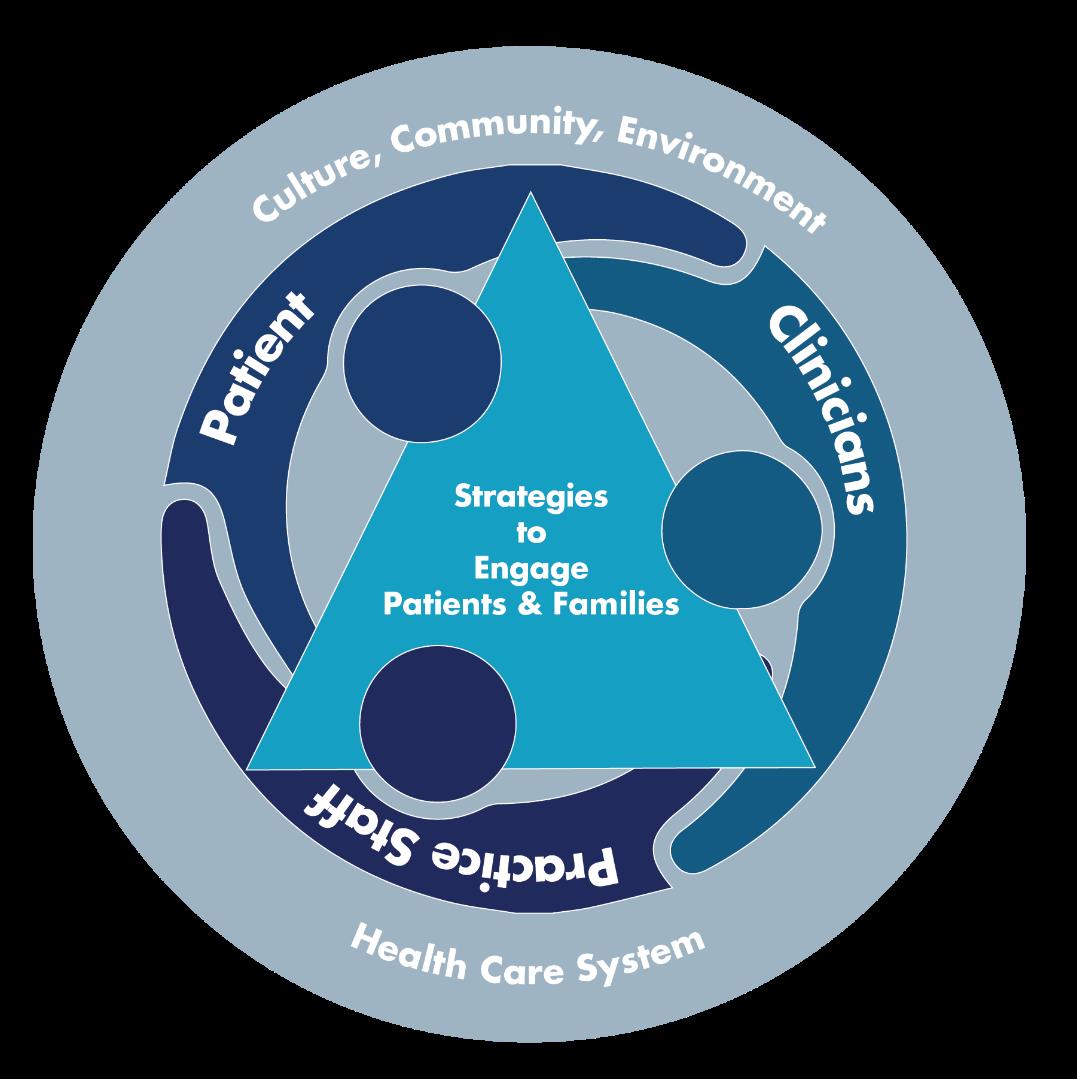Environmental Scan Report
As patient safety expert Robert M. Wachter stated in a 2006 editorial in the Annals of Internal Medicine:
…We now understand that the ambulatory environment is so different from the hospital environment that expertise in hospital care might not predict excellent outpatient care and might even create skills and instincts that are harmful in the ambulatory environment.261
During our environmental scan, we were challenged to identify the structures, processes, and interventions by which patient safety in primary care may be influenced, improved, and further accelerated by the engagement of patients and families. Input from our case study practices, Technical Expert Panel, and other key informants helped frame how to achieve safe care in primary care settings. Based on our work, we propose a new conceptual model leading to improved patient safety in primary care with engagement of the patient, family, and community at its core (Figure 4).
In the model, partnership is key. The patient, clinician, and practice staff member are linked together in a relationship based on communication, respect, and trust. Enabling patient and family engagement strategies (triangle) are mechanisms for patients, providers, and practice staff to enhance this relationship with open flow of information. The model also reflects that primary care practice does not exist in isolation but is part of a broader, complex health care system and is subject to the tensile forces of culture, community, and external environment.
Our model, the "Cycle of Safety," is predicated on four simple concepts:
- Partnership: Partnership refers to the relationships forged between the patient, provider, and practice staff within the primary care practice. Safe care is greatest when the relationships between these actors are strong. All three groups together represent the "primary care team," moving away from the traditional paternalistic model of medicine into one of collaboration, mutual respect, and trust.
- Teamwork: Strategies to improve teamwork and inclusion of the patient and family as part of the health care team are safety imperatives in primary care. As a team, all partners know their roles and what is expected of them in order for the team to perform effectively. The model recognizes that patient engagement is a continuum from disengaged to activated and empowered. In a resilient team, the other members adapt and accommodate individual differences while pursuing a common goal. In the case of a disengaged patient, bringing in additional support networks, within the patient or provider nodes, may be required to move the patient onto the path toward activation.
- Community: Another key component of our model is the concept of community. Here, community influences, including practice location, sociodemographic characteristics of the patients, and community-based resources (including grocery stores, pharmacies, and safe places for children to play and adults to exercise) are all contributing factors to safety in primary care. Attention to the health of communities is vital to developing a safe culture.
- Health care environment: The model also recognizes that the practice of primary care is strongly influenced by external forces, including policy, health reform, and practice transformation efforts. By establishing the core values of the practice around partnership, teamwork, and community, a primary care practice will create a resilient microsystem within which to promote patient safety.
Figure 4. Model of Patient Safety in Primary Care




